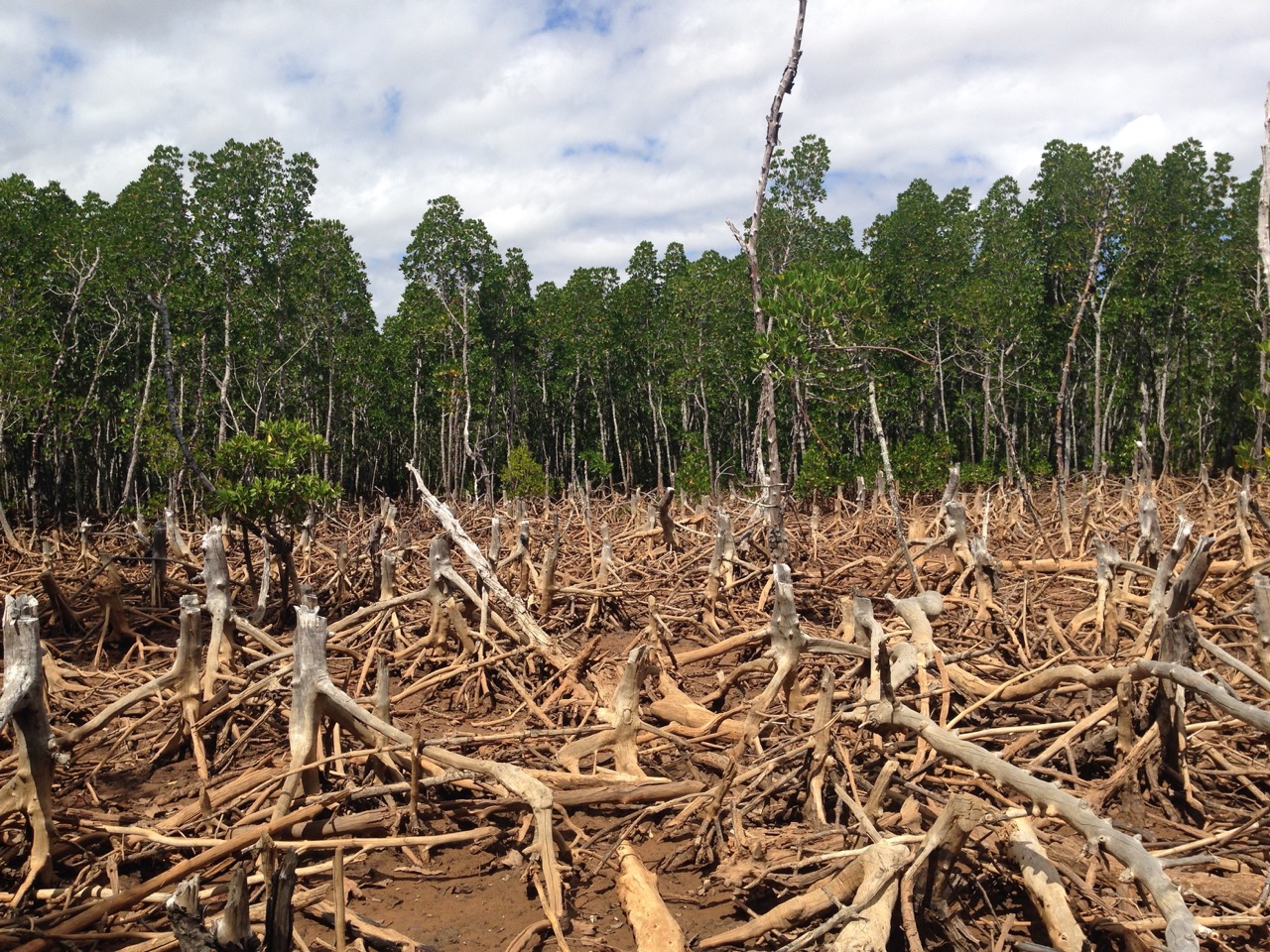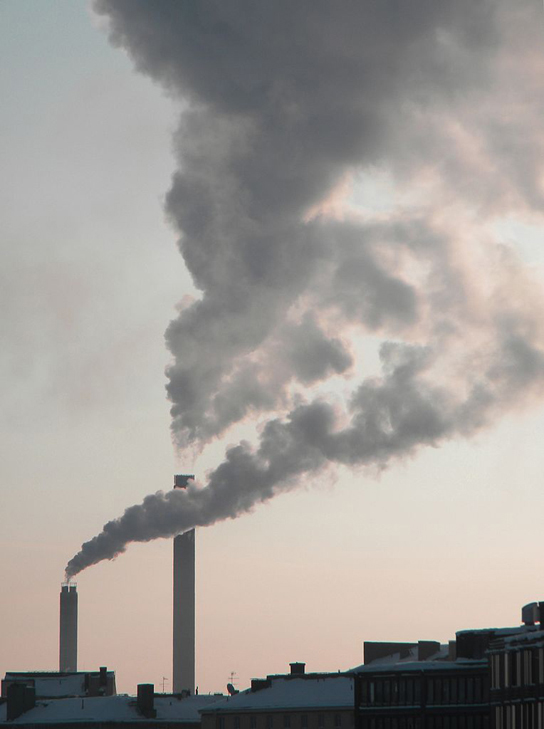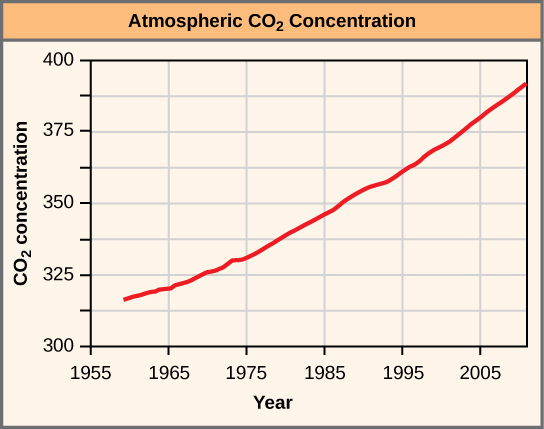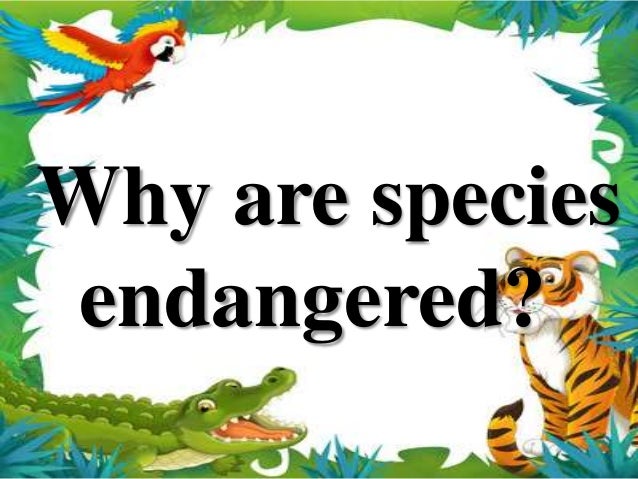BIODIVERSITY LOSS
Human activity is a major threat to the planet's biodiversity. This is because human population growth thus far has been exponential, meaning that its growth rate stays the same regardless of population size. This makes the population grow faster and faster as it gets larger.
Populations may grow exponentially for some period, but they ultimately reach a carrying capacity when they become limited by resource availability. Humans, however, have continued to work around carrying capacity as they develop new technologies to help support the ever-growing population.
This threatens biodiversity because the more humans there are, the more this displaces other species and reduces species richness.
Human-mediated causes of biodiversity loss
- Land-use change: Humans may destroy natural landscapes as they mine resources and urbanize areas. This is detrimental, as it displaces residing species, reducing available habitats and food sources.
- Pollution: Pollution can occur from the runoff or disposal of chemical substances, or from energy sources (noise and light pollution).
- Introduced species: Humans may intentionally, or unintentionally introduce a non-native species into an ecosystem. This can negatively effect an ecosystem because the introduced species may outcompete native organisms and displace them.
- Resource exploitation: Humans constantly consume resources for their own needs. Some examples include the mining of natural resources like coal, the hunting and fishing of animals for food, and the clearing of forests for urbanization and wood use.Extensive overuse of nonrenewable resources, like fossil fuels, can cause great harm to the environment. Recycling products made from nonrenewable resources (such as plastic, which is made from oil) is one way to reduce the negative impacts of this resource exploitation. In addition, the development and use of renewable resources, like solar or wind energy, can help decrease the harmful effects of resource exploitation.
Climate change and biodiversity
The current climate change Earth is facing is caused by the increase in global temperatures.
Human activity is changing Earth's atmosphere faster than it has ever changed during its history.
The burning of fossil fuels and the growth of animal agriculture has caused large amounts of greenhouse gases (such as carbon dioxide and methane) in the atmosphere. Higher concentrations of greenhouse gases trap more heat in the biosphere and result in global warming. In turn, this drives climate change.
When climate change affects an environment so much that it is unable to sustain organisms, they must adapt, relocate, or face extinction. Because of this, climate change can have a huge effect on biodiversity.
Conservation
Conservation efforts work to protect species and the places in which they live. There are many different kinds of conservation efforts.
Species protection is one way to help combat extinction. Although extinction is a natural process, it is occurring at a much faster, much higher rate than normally expected.
The creation of local, national, and international legislation can help prevent the loss of endangered species. In addition, captive-breeding programs may help protect endangered species by maintaining a healthy population of endangered species in captivity.
Habitat protection, preservation, and restoration is essential in protecting biodiversity. This ensures that the protected species have places to live that can support them.
Ultimately, saving one habitat can have a cascading effect, and help to protect an entire ecosystem. Scientists have determined several biodiversity hotspots, which are high priority in protecting.
Common mistakes and misconceptions
- The extinction rate is currently 1,000-10,000 times higher than the natural extinction rate. Some people think that extinction is not a relevant issue, but it is actually more relevant than ever! Historically, the natural extinction rate is between 1-5 extinctions per year. Human impact has caused this rate to jump to a significantly higher rate, offsetting the balance of biodiversity.
- The greenhouse effect is not all negative. Although we talk about greenhouse gases producing a negative impact (global change), the greenhouse effect serves a natural purpose: maintaining the warmth that sustains life on Earth. The problem arises when too much heat is trapped, causing a rise in average global temperature.
- An individual person can have an effect on biodiversity. Although biodiversity loss may be a large-scale problem, reducing threats to biodiversity can begin with a single individual. Smaller efforts, such as reusing or recycling items, or even purchasing sustainable foods, can have a culminating effect. That is, if each person did these things, even just a little, they would add up and help reduce biodiversity loss!














No comments: